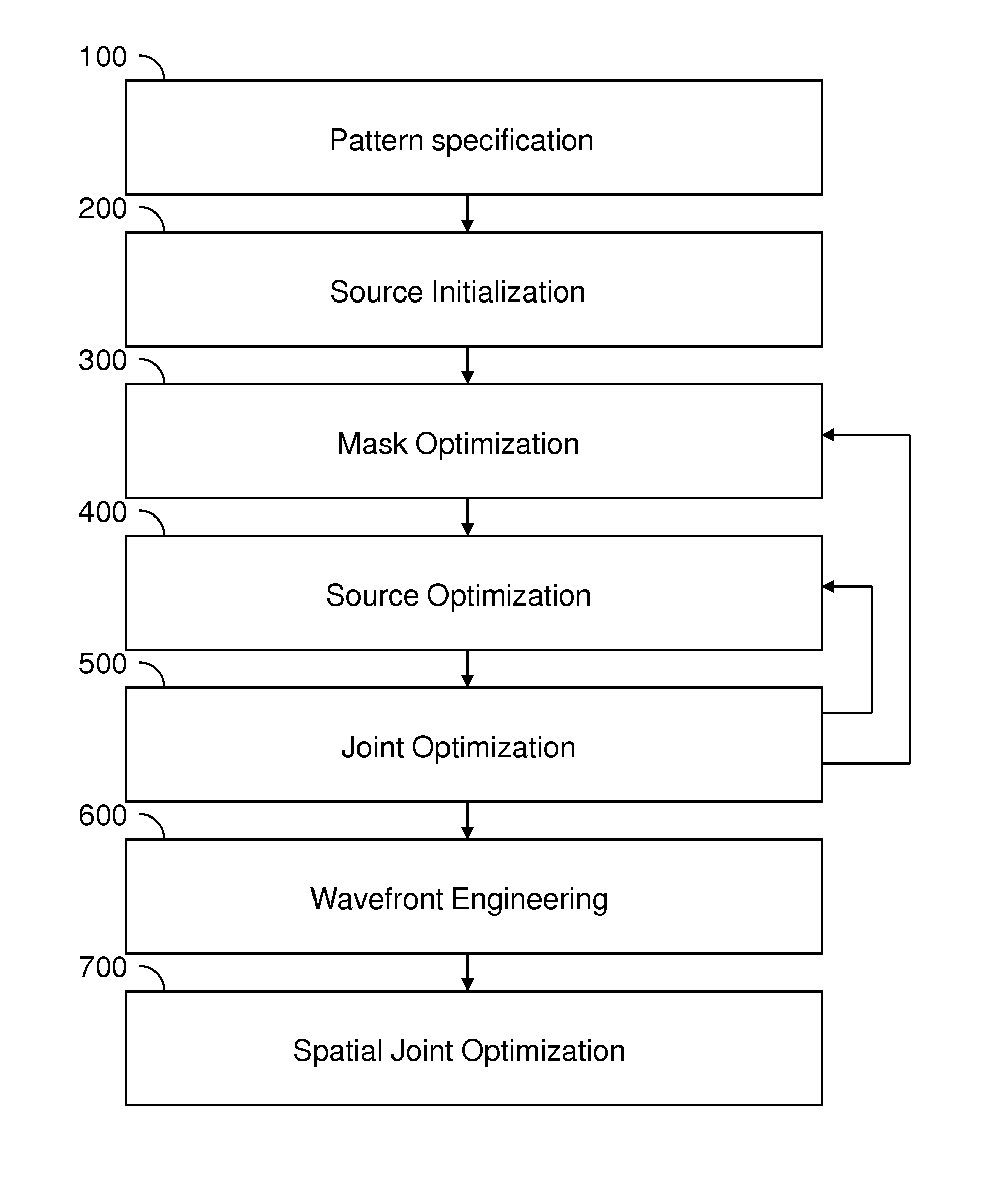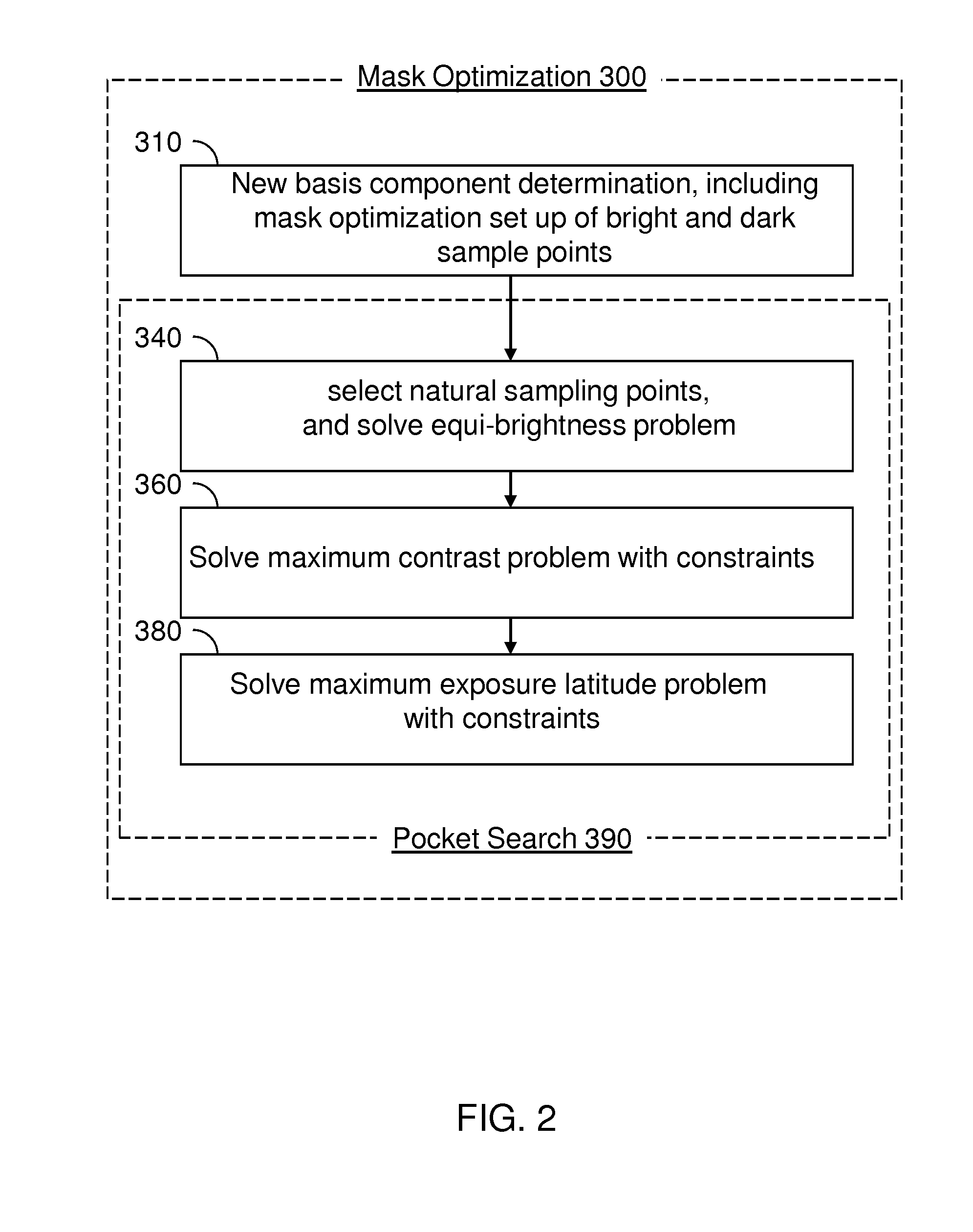Method for generating a plurality of optimized wavefronts for a multiple exposure lithographic process
- Summary
- Abstract
- Description
- Claims
- Application Information
AI Technical Summary
Benefits of technology
Problems solved by technology
Method used
Image
Examples
Embodiment Construction
[0026]As stated above, the present disclosure relates to a method for generating a plurality of optimized wavefronts for a multiple exposure lithography process, which is now described in detail with accompanying figures. It is noted that like and corresponding elements are referred to by like reference numerals.
[0027]As used herein, “lithographic fabrication” refers to formation of a lithographic image by at least one exposure step and at least one development step, which may potentially be a self-developing step occurring upon exposure.
[0028]As used herein “multiexposure lithography” refers to a lithographic process that employs multiple masks to provide multiple exposure of a same photoresist to form a single lithographic pattern therein.
[0029]As used herein, a “source” or an “illumination source” refers to a device configured to emit radiation for the purpose of lithographic exposure.
[0030]As used herein, a “source shape” refers to the directional shape of the illumination that ...
PUM
 Login to View More
Login to View More Abstract
Description
Claims
Application Information
 Login to View More
Login to View More - R&D
- Intellectual Property
- Life Sciences
- Materials
- Tech Scout
- Unparalleled Data Quality
- Higher Quality Content
- 60% Fewer Hallucinations
Browse by: Latest US Patents, China's latest patents, Technical Efficacy Thesaurus, Application Domain, Technology Topic, Popular Technical Reports.
© 2025 PatSnap. All rights reserved.Legal|Privacy policy|Modern Slavery Act Transparency Statement|Sitemap|About US| Contact US: help@patsnap.com



